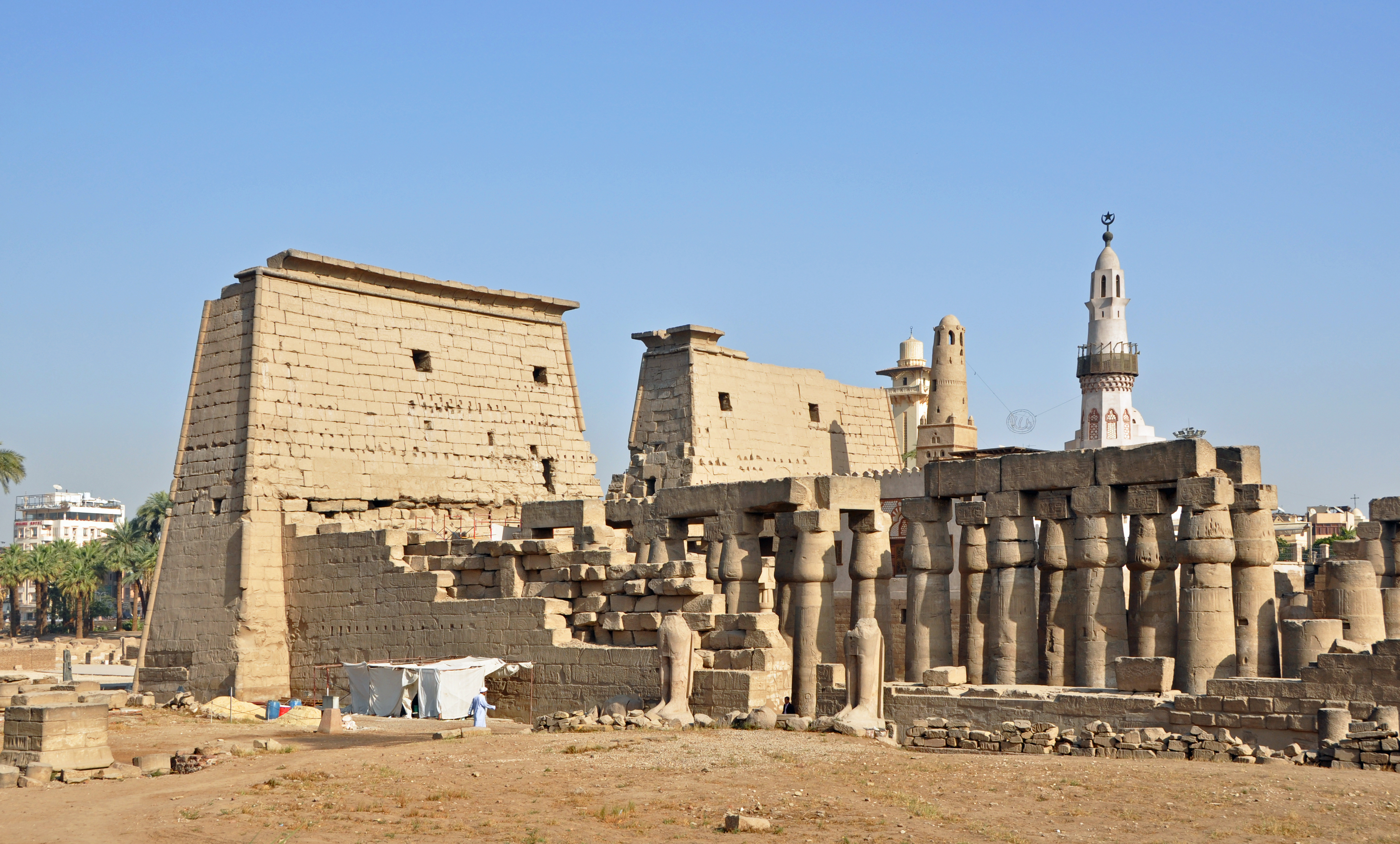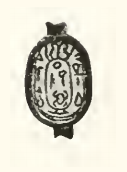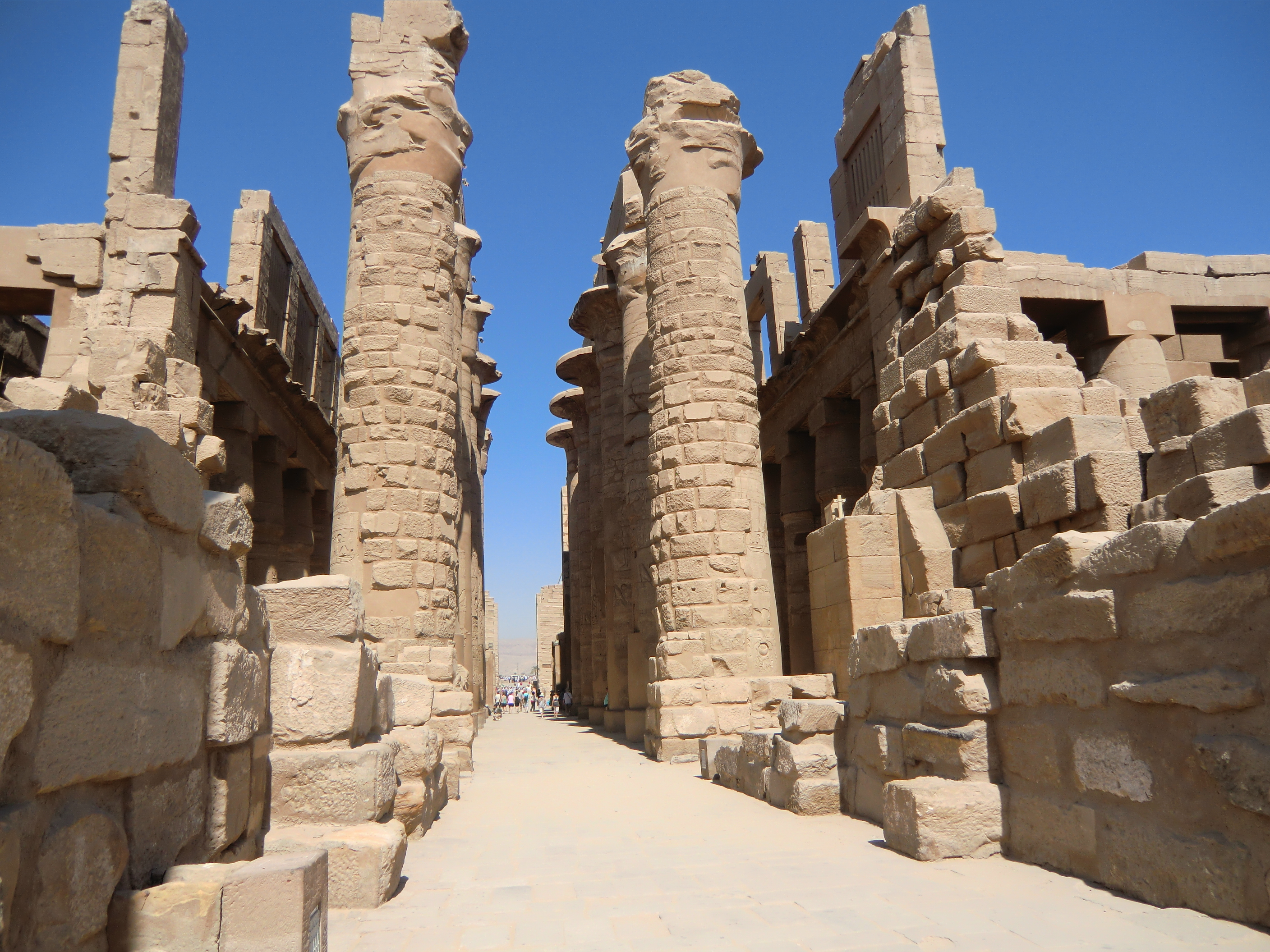|
Luxor Museum
Luxor Museum is an archaeological museum in Luxor (ancient Thebes), Egypt. It stands on the corniche, overlooking the east bank of the River Nile. Establishment The Luxor Museum was inaugurated in 1975. It is a two-story building. The range of artifacts on display is far more restricted than the country's main collections in the Egyptian Museum in Cairo; this was, however, deliberate, since the museum prides itself on the quality of the pieces it has, the uncluttered way in which they are displayed, and the clear multilingual labeling used. The museum was conceived by the Egyptian Ministry of Culture, which hired Dr. Mahmud El Hakim, a top Egyptian architect, to create the plans in 1962. The installation of the museum art works came later and was finished between 1972 and 1975. Collection Among the items on display are grave goods from the tomb of the 18th dynasty pharaoh Tutankhamun ( KV62) and a collection of 26 New Kingdom statues that were found buried in the Luxor stat ... [...More Info...] [...Related Items...] OR: [Wikipedia] [Google] [Baidu] |
Luxor
Luxor is a city in Upper Egypt. Luxor had a population of 263,109 in 2020, with an area of approximately and is the capital of the Luxor Governorate. It is among the List of oldest continuously inhabited cities, oldest continuously inhabited cities in the world. Luxor has frequently been characterized as the ''world's greatest open-air museum'', as the ruins of the Egyptian temple complexes at Karnak and Luxor Temple, Luxor stand within the modern city. Immediately opposite, across the River Nile, lie the monuments, temples and tombs of the West Bank Theban Necropolis, which includes the Valley of the Kings and the Valley of the Queens. Thousands of tourists from all around the world arrive annually to visit Luxor's monuments, contributing greatly to the economy of the modern city. Yusuf Abu al-Haggag is the prominent Muslim historical figure of Luxor. Etymology The name ''Luxor'' derives from the Arabic , meaning "castle" or "palace", in the plural form ''al-quṣūr'' (� ... [...More Info...] [...Related Items...] OR: [Wikipedia] [Google] [Baidu] |
Luxor Temple
The Luxor Temple () is a large Ancient Egyptian temple complex located on the east bank of the Nile River in the city today known as Luxor (ancient Thebes (Egypt), Thebes) and was constructed approximately 1400 BCE. In the Egyptian language it was known as ''ipet resyt'', "the southern sanctuary". It was one of the two primary temples on the east bank, the other being Karnak.Science, "Excavation of the Temple of Luxor," Science, 6, no. 6 (1885): 370. Unlike the other temples in Thebes, Luxor temple is not dedicated to a cult god or a deified version of the pharaoh in death. Instead, Luxor temple is dedicated to the rejuvenation of kingship; it may have been where many of the pharaohs of Egypt were crowned in reality or conceptually (as in the case of Alexander the Great, who claimed he was crowned at Luxor but may never have traveled south of Memphis, Egypt, Memphis, near modern Cairo). To the rear of the temple are chapels built by Amenhotep III of the Eighteenth Dynasty of Egypt ... [...More Info...] [...Related Items...] OR: [Wikipedia] [Google] [Baidu] |
History Museums In Egypt
History is the systematic study of the past, focusing primarily on the human past. As an academic discipline, it analyses and interprets evidence to construct narratives about what happened and explain why it happened. Some theorists categorize history as a social science, while others see it as part of the humanities or consider it a hybrid discipline. Similar debates surround the purpose of history—for example, whether its main aim is theoretical, to uncover the truth, or practical, to learn lessons from the past. In a more general sense, the term ''history'' refers not to an academic field but to the past itself, times in the past, or to individual texts about the past. Historical research relies on primary and secondary sources to reconstruct past events and validate interpretations. Source criticism is used to evaluate these sources, assessing their authenticity, content, and reliability. Historians strive to integrate the perspectives of several sources to develop ... [...More Info...] [...Related Items...] OR: [Wikipedia] [Google] [Baidu] |
Museums Established In 1975
A museum is an institution dedicated to displaying or Preservation (library and archive), preserving culturally or scientifically significant objects. Many museums have exhibitions of these objects on public display, and some have private collections that are used by researchers and specialists. Museums host a much wider range of objects than a library, and they usually focus on a specific theme, such as the art museums, arts, science museums, science, natural history museums, natural history or Local museum, local history. Public museums that host exhibitions and interactive demonstrations are often tourist attractions, and many draw large numbers of visitors from outside of their host country, with the List of most-visited museums, most visited museums in the world attracting millions of visitors annually. Since the establishment of Ennigaldi-Nanna's museum, the earliest known museum in ancient history, ancient times, museums have been associated with academia and the preserva ... [...More Info...] [...Related Items...] OR: [Wikipedia] [Google] [Baidu] |
List Of Museums Of Egyptian Antiquities
The following is a list of museums with major collections of Egyptian antiquities: Museum collections with specified number 5,000+ # Grand Egyptian Museum, Giza, Egypt: Over 100,000 artifacts # Egyptian Museum, Cairo, Egypt: Over 100,000 artifacts # British Museum, London, England: Over 100,000 artifacts (not including the 2001 donation of the six million artifact Wendorf Collection of Egyptian and Sudanese Prehistory) # Ägyptisches Museum, Neues Museum, Berlin, Germany: About 80,000 artifacts # Petrie Museum of Egyptian Archaeology, London, England: About 80,000 artifacts # Musée du Louvre, Paris, France: 77,404 artifacts # National Museum of Egyptian Civilization, Cairo Egypt: 50,000 artifacts # Boston Museum of Fine Arts, Boston, Massachusetts, USA: About 45,000 artifacts # Kelsey Museum of Archaeology, Ann Arbor, Michigan, USA: Over 45,000 artifacts # University of Pennsylvania Museum of Archaeology and Anthropology, Philadelphia, Pennsylvania, USA: Over 42,000 artif ... [...More Info...] [...Related Items...] OR: [Wikipedia] [Google] [Baidu] |
Amenhotep, Son Of Hapu
Amenhotep, son of Hapu (transcribed ''jmn-ḥtp zꜣ ḥꜣp.w''; early-mid 14th century BC) was an ancient Egyptian architect, a priest, a Reporter (Ancient Egypt), herald, a scribe, and a public official, who held a number of offices under Amenhotep III of the Eighteenth Dynasty of Egypt, 18th Dynasty. He was posthumously deified as a god of healing. Life He is said to have been born at the end of Thutmose III's reign, in the town of Athribis (modern Banha in the north of Cairo). His father was Hapu, and his mother Itu. Though little about Amenhotep's early life is known prior to his entering civil service, it is believed that he learned to read and write at the local library and scriptorium. He was a priest and a Scribe of Recruits (organizing the labour and supplying the manpower for the Pharaoh's projects, both civilian and military). He was also an architect and supervised several building projects, among them mortuary Temple of Amenhotep III, Amenhotep III's mortuary ... [...More Info...] [...Related Items...] OR: [Wikipedia] [Google] [Baidu] |
Kamose
Kamose was the last king of the Thebes, Egypt, Theban Seventeenth dynasty of Egypt, Seventeenth Dynasty at the end of the Second Intermediate Period. Kamose is usually ascribed a reign of three years (his highest attested regnal year), although some scholars now favor giving him a longer reign of approximately five years. He was the son of Seqenenre Tao and the brother of Ahmose I, founder of the Eighteenth dynasty of Egypt, Eighteenth Dynasty. His mother is unknown, but is thought to be Ahhotep I. His reign is important for the decisive military initiatives he took against the Hyksos, who had come to rule much of Ancient Egypt. His father had begun the initiatives and lost his life in battle with the Hyksos. It is thought that his mother, as regent, continued the campaigns after the death of Kamose, and that his full brother made the final conquest of them and united all of Egypt. Campaigns ''Casus Belli'' Kamose was the final king in a succession of native Egyptian kings at ... [...More Info...] [...Related Items...] OR: [Wikipedia] [Google] [Baidu] |
Amenhotep III
Amenhotep III ( , ; "Amun is satisfied"), also known as Amenhotep the Magnificent or Amenhotep the Great and Hellenization, Hellenized as Amenophis III, was the ninth pharaoh of the Eighteenth Dynasty of Egypt, Eighteenth Dynasty. According to different authors following the "Low Chronology", he ruled New Kingdom of Egypt, Egypt from June 1386 to 1349 BC, or from June 1388 BC to December 1351 BC/1350 BC, after his father Thutmose IV died. Amenhotep was Thutmose's son by a minor wife, Mutemwiya. His reign was a period of unprecedented prosperity and splendour, when Egypt reached the peak of its artistic and international power, and as such he is considered one of ancient Egypt's greatest pharaohs. He is also one of the few pharaohs who was one of the few pharoahs who was List of pharaohs deified during lifetime, worshipped as a deity during his lifetime. When he died in the 38th or 39th year of his reign he was succeeded by his son Amenhotep IV, who later changed his name to Akhe ... [...More Info...] [...Related Items...] OR: [Wikipedia] [Google] [Baidu] |
Sobek
Sobek (), also known as Suchus (), was an ancient Egyptian deities, ancient Egyptian deity with a complex and elastic history and nature. He is associated with the Nile crocodile and is often represented as a crocodile-headed humanoid, if not as a crocodile outright. Sobek was also associated with pharaonic power, fertility, and military prowess, but served additionally as a protective deity with apotropaic magic, apotropaic qualities, invoked especially for protecting others from the dangers presented by the Nile. History Sobek enjoyed a longstanding presence in the ancient Egyptian pantheon, from the Old Kingdom of Egypt (c. 2686–2181 BCE) through the Roman period (). He is first known from several different Pyramid Texts of the Old Kingdom, particularly from spell PT 317. The spell, which praises the pharaoh as the living incarnation of the Nile crocodile, crocodile god, reads: The origin of his name, ''Sbk''WB IV, 95. in Egyptian language, Egyptian, is debated among scho ... [...More Info...] [...Related Items...] OR: [Wikipedia] [Google] [Baidu] |
Karnak
The Karnak Temple Complex, commonly known as Karnak (), comprises a vast mix of temples, pylons, chapels, and other buildings near Luxor, Egypt. Construction at the complex began during the reign of Senusret I (reigned 1971–1926 BC) in the Middle Kingdom () and continued into the Ptolemaic Kingdom (305–30 BC), although most of the extant buildings date from the New Kingdom. The area around Karnak was the ancient Egyptian ''Ipet-isut'' ("The Most Selected of Places") and the main place of worship of the 18th Dynastic Theban Triad, with the god Amun as its head. It is part of the monumental city of Thebes, and in 1979 it was added to the UNESCO World Heritage List along with the rest of the city. Karnak gets its name from the nearby, and partly surrounded, modern village of El-Karnak, north of Luxor. Name The original name of the temple was ''Ipet-isut'', meaning "The Most Select of Places". The complex's modern name "Karnak" comes from the nearby village of el-Karnak ... [...More Info...] [...Related Items...] OR: [Wikipedia] [Google] [Baidu] |
Akhenaten
Akhenaten (pronounced ), also spelled Akhenaton or Echnaton ( ''ʾŪḫə-nə-yātəy'', , meaning 'Effective for the Aten'), was an ancient Egyptian pharaoh reigning or 1351–1334 BC, the tenth ruler of the Eighteenth Dynasty of Egypt, Eighteenth Dynasty. Before the fifth year of his reign, he was known as Amenhotep IV (, meaning "Amun is satisfied", Hellenized as ''Amenophis IV''). As a pharaoh, Akhenaten is noted for abandoning traditional ancient Egyptian religion of polytheism and introducing Atenism, or worship centered around Aten. The views of Egyptologists differ as to whether the religious policy was absolutely monotheism, monotheistic, or whether it was monolatristic, religious syncretism, syncretistic, or henotheistic. This culture shift away from traditional religion was reversed after his death. Akhenaten's monuments were dismantled and hidden, his statues were destroyed, and his name Damnatio memoriae, excluded from regnal list, lists of rulers compiled by lat ... [...More Info...] [...Related Items...] OR: [Wikipedia] [Google] [Baidu] |
Ramesses I
Menpehtyre Ramesses I (or Ramses) was the founding pharaoh of ancient Egypt's Nineteenth Dynasty of Egypt, 19th Dynasty. The dates for his short reign are not completely known but the timeline of late 1290s BC, 1292–1290 BC is frequently cited as well as 1290s BC, 1295–1294 BC. While Ramesses I was the founder of the 19th Dynasty, his brief reign mainly serves to mark the transition between the reign of Horemheb, who had stabilized Egypt in the late 18th Dynasty, and the rule of the powerful pharaohs of his own dynasty, in particular his son Seti I, and grandson Ramesses II. Origins Originally called Paramessu, Ramesses I was of non-royal birth, being born into a noble military family from the Nile Delta region, perhaps near the former Hyksos capital of Avaris. He was a son of a troop commander called Seti (commander), Seti. His uncle Khaemwaset, an army officer, married Tamwadjesy, the matron of Tutankhamun's Harem of Amun, who was a relative of Amenhotep called Huy, Huy, ... [...More Info...] [...Related Items...] OR: [Wikipedia] [Google] [Baidu] |










